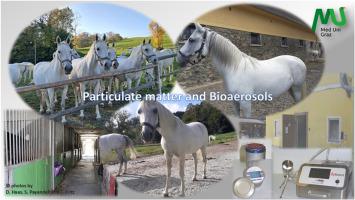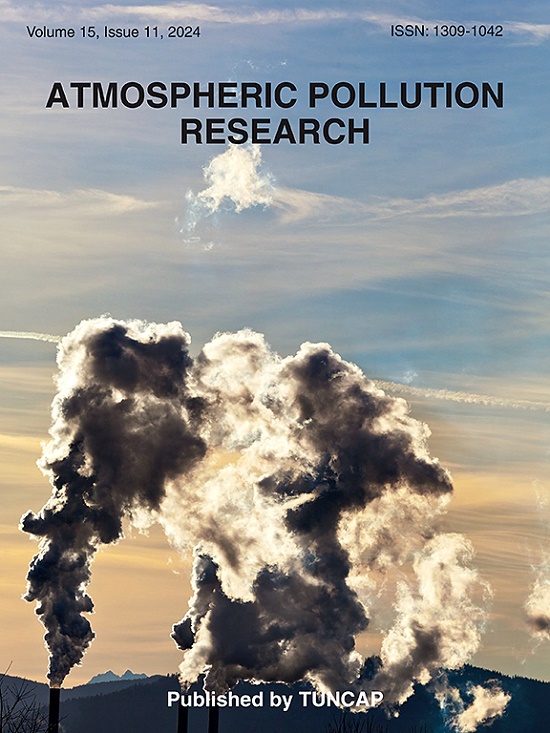马棚空气颗粒物与可培养真菌的对比研究
IF 3.5
3区 环境科学与生态学
Q2 ENVIRONMENTAL SCIENCES
引用次数: 0
摘要
今天,马在运动中帮助我们,是我们休闲活动的伙伴。频繁消耗粗饲料和垫料,马匹和工作人员经常暴露在高水平的稳定空气中的微生物。本研究的目的是调查城市和农村两个不同建筑类型的马棚中颗粒物和可培养真菌的排放及其在周围环境中的传播情况。发射测量分别在一个开放的和一个封闭的马厩中进行。为了评估排放,在马厩入口、背风和迎风方向进行了测量。采用MAS 100®检测空气中真菌,APC M3®检测颗粒物。此外,对空气、床上用品和干草中的真菌进行了培养和鉴定。封闭马厩总颗粒浓度中位数为2.57 × 107 N/m3,是开放马厩的2倍。两个马厩的真菌总浓度中位数为7.29 × 103 CFU/m3。优势真菌属为曲霉属。开放式马厩中曲霉的中位浓度为5 × 103 CFU/m3,显著高于封闭式马厩(p = 0.001)。在床上用品和干草中检测到的真菌属与两个马厩空气中检测到的真菌属相似。本研究的发现可能有助于未来规划和实现马棚,避免生物气溶胶的积累,防止对马匹和工作人员的健康危害。本文章由计算机程序翻译,如有差异,请以英文原文为准。

Comparative investigation of airborne particulate matter and culturable fungi in horse stables
Today, horses assist us in sports and are partners in our leisure activities. The frequent consumption of roughage and bedding materials, horses and staff are often exposed to high levels of microorganisms in the stable air. The objective of the study was to investigate the emission of particulate matter and culturable fungi in two horse stables of different construction types in urban and rural areas as well as their transmission in the immediate surroundings. The emission measurements were done in an open and a closed stable. To assess the immissions, measurements were conducted at the stables entrance, leeward and windward directions. Samples were carried out using the MAS 100® for airborne fungi and the APC M3® for particulate matter. Additionally, fungi from air, bedding and hay were cultured and identified. The median concentration of the total particles in the closed stable was of 2.57 × 107 N/m3, which was twice as high as in the open stable. The median concentration of the total fungi was 7.29 × 103 CFU/m3 in both stables. The dominant fungal genus was Aspergillus. In the open stable the median concentration of Aspergillus sp. was of 5 × 103 CFU/m3 and thus significantly higher (p = 0.001) than in the closed stable. The fungal genera detected in bedding and hay were similar to those in the air of both stables. The findings of this study may contribute to plan and realise horse stables in future, which avoid accumulation of bioaerosols and prevent health hazards to horses and the working team.
求助全文
通过发布文献求助,成功后即可免费获取论文全文。
去求助
来源期刊

Atmospheric Pollution Research
ENVIRONMENTAL SCIENCES-
CiteScore
8.30
自引率
6.70%
发文量
256
审稿时长
36 days
期刊介绍:
Atmospheric Pollution Research (APR) is an international journal designed for the publication of articles on air pollution. Papers should present novel experimental results, theory and modeling of air pollution on local, regional, or global scales. Areas covered are research on inorganic, organic, and persistent organic air pollutants, air quality monitoring, air quality management, atmospheric dispersion and transport, air-surface (soil, water, and vegetation) exchange of pollutants, dry and wet deposition, indoor air quality, exposure assessment, health effects, satellite measurements, natural emissions, atmospheric chemistry, greenhouse gases, and effects on climate change.
 求助内容:
求助内容: 应助结果提醒方式:
应助结果提醒方式:


